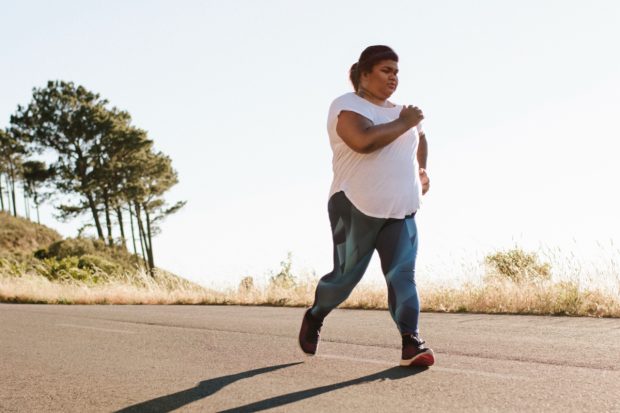Seeking serious health benefits? Take it easy on your rest day!

It’s easy to get carried away by those feel-good endorphins from exercise, which make it hard to take a day off from training.
But rest days are crucial for your overall health. That’s why active recovery—low-intensity training on your rest days—is so important. Your body needs time for recovery between intense workout sessions so your muscles can repair properly and you can come back even stronger.
If you’re constantly pushing your body without proper rest, you’ll eventually reach a point where exercise stops producing results.
The good news is, you don’t need to completely avoid activity on your rest days. Here’s why active recovery should be a part of your workout routine, plus the top 5 exercises to do on your rest days.
What Is Active Recovery?

Active recovery is when you do low-intensity exercise—yoga, walking, light jogging—on your rest days. These easier workouts should be no more than 70 percent of your maximum effort.
For example, if you’re an avid HIIT enthusiast, an active rest day for you might include a 20-minute bodyweight circuit with low-impact (non-jumping) exercises. Or, if you’re training for a marathon, an active rest day for you may include a light jog or long walk for a gentle recovery.
What Are the Benefits of Active Recover?

Working out at lower intensities increases blood flow to your working muscles, which increases recovery time. Increased blood flow and circulation release nutrients—amino acids and oxygen—to your muscles so they can repair more quickly.
Additionally, active recovery helps rid your body of wastes—lactic acid—that build up during exercise. Lactic acid is the main contributor to muscle damage and fatigue so it’s important to flush your body of it.
And let’s face it, your body and mind could use a mental break from high-intensity training. Dialing it down a notch through active recovery is vital for both your physical and mental health.
Active Recovery Tips and Tricks

Training 5 or more days a week? Try substituting one of your workouts for an active recovery day.
Working out 3-4 days a week? Turn your off days into active recovery ones to burn calories, gain strength and improve your cardiovascular fitness.
But some days, you may feel like laying on the couch and doing nothing. There’s absolutely nothing wrong with taking days off completely from training. Just remember to listen to your body and give it the proper rest it needs.
Top 5 Active Recovery Exercises
Light Strength Training
Yes, you can absolutely lift weights on your active recovery days. The key: Perform high-rep exercises with light weights to stimulate blood flow and supply nutrients to your working muscles without straining or tearing them.
A good rule of thumb is to choose 5 to 8 exercises to create a full-body circuit and perform each movement for 30 seconds with a 15-second break between sets. Repeat for a total of 3-4 rounds.
Here is a full-body active recovery strength training circuit you can do from home. If you don’t have access to dumbbells, use your own body weight or grab two water bottles.
It’s important to note that if you’re feeling too sore from your previous training session, it’s best not to complete a strength training session. Opt for a lighter activity instead to reduce the risk of injury.
Core Activation
Your core muscles power your every move, whether it’s standing up from a chair or squatting down to tie your shoes. Keeping your abdominals, lower back and glutes firing on your recovery days will prepare your body for your next intense training day.
Consider the following exercises your go-to moves and add them to your recovery days. Shoot for 3-4 rounds of 30 seconds followed by a 15-second recovery.
Yoga

Yoga is one of the most beneficial practices for active recovery. The practice helps stretch sore muscles and increase flexibility, which leads to reduced stress and inflammation.
Walking or Jogging

If you’re a runner, opt for a slow jog. But walking can also do the trick, especially since it’s one of the best forms of active recovery. Both walking and jogging enhance blood flow to your muscles and aid in recovery.
Cycling

Cycling at a leisurely pace is an excellent active recovery exercise. This low-impact activity will increase blood circulation throughout your body without placing pressure on your joints.
Final Thoughts
On your active recovery days, make sure you’re not working harder than 70 percent of your maximum effort. This will ensure your body is getting the rest it needs.
Over time, you’ll start to feel that you’re less sore and have more energy after active recovery days. But if you’re injured, in pain or overly fatigued, your body may need passive recovery—stillness and inactivity—instead. Always listen to your body!
Find the inspiration you need, no matter where you’re at in your fitness journey. Start your free trial with Gymondo and explore 30+ fitness programs, 300+ challenging workouts and 1000+ foodie-grade recipes.






Kommentar schreiben